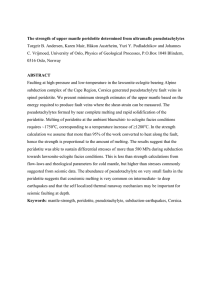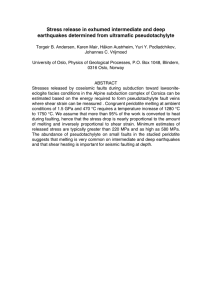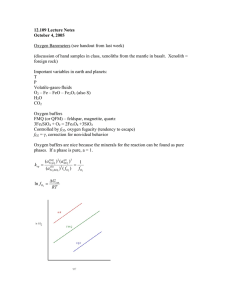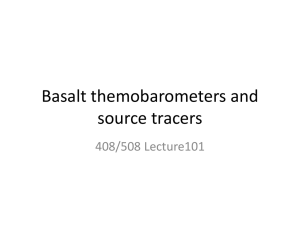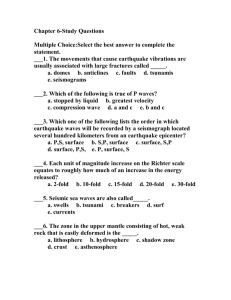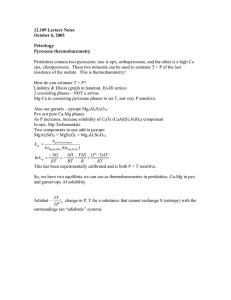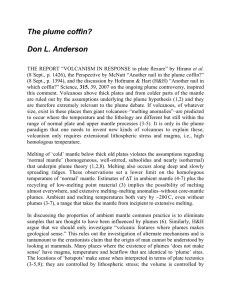Ultra-mafic pseudotachylytes and the strength ... upper mantle during collision and ...
advertisement
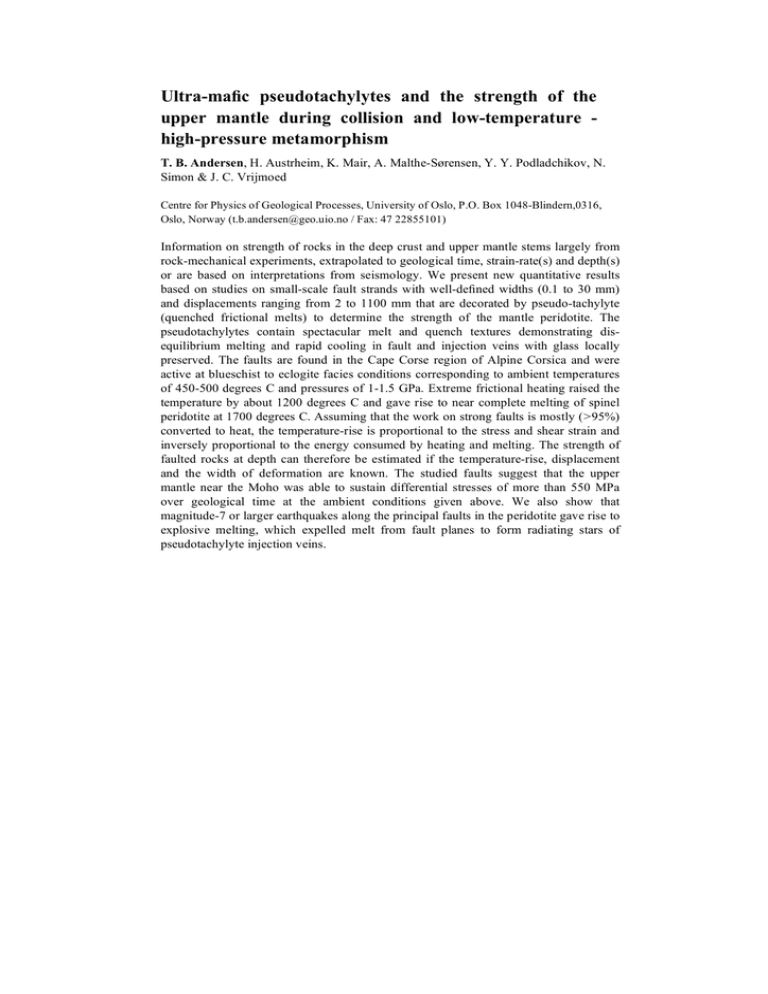
Ultra-mafic pseudotachylytes and the strength of the upper mantle during collision and low-temperature high-pressure metamorphism T. B. Andersen, H. Austrheim, K. Mair, A. Malthe-Sørensen, Y. Y. Podladchikov, N. Simon & J. C. Vrijmoed Centre for Physics of Geological Processes, University of Oslo, P.O. Box 1048-Blindern,0316, Oslo, Norway (t.b.andersen@geo.uio.no / Fax: 47 22855101) Information on strength of rocks in the deep crust and upper mantle stems largely from rock-mechanical experiments, extrapolated to geological time, strain-rate(s) and depth(s) or are based on interpretations from seismology. We present new quantitative results based on studies on small-scale fault strands with well-defined widths (0.1 to 30 mm) and displacements ranging from 2 to 1100 mm that are decorated by pseudo-tachylyte (quenched frictional melts) to determine the strength of the mantle peridotite. The pseudotachylytes contain spectacular melt and quench textures demonstrating disequilibrium melting and rapid cooling in fault and injection veins with glass locally preserved. The faults are found in the Cape Corse region of Alpine Corsica and were active at blueschist to eclogite facies conditions corresponding to ambient temperatures of 450-500 degrees C and pressures of 1-1.5 GPa. Extreme frictional heating raised the temperature by about 1200 degrees C and gave rise to near complete melting of spinel peridotite at 1700 degrees C. Assuming that the work on strong faults is mostly (>95%) converted to heat, the temperature-rise is proportional to the stress and shear strain and inversely proportional to the energy consumed by heating and melting. The strength of faulted rocks at depth can therefore be estimated if the temperature-rise, displacement and the width of deformation are known. The studied faults suggest that the upper mantle near the Moho was able to sustain differential stresses of more than 550 MPa over geological time at the ambient conditions given above. We also show that magnitude-7 or larger earthquakes along the principal faults in the peridotite gave rise to explosive melting, which expelled melt from fault planes to form radiating stars of pseudotachylyte injection veins.
